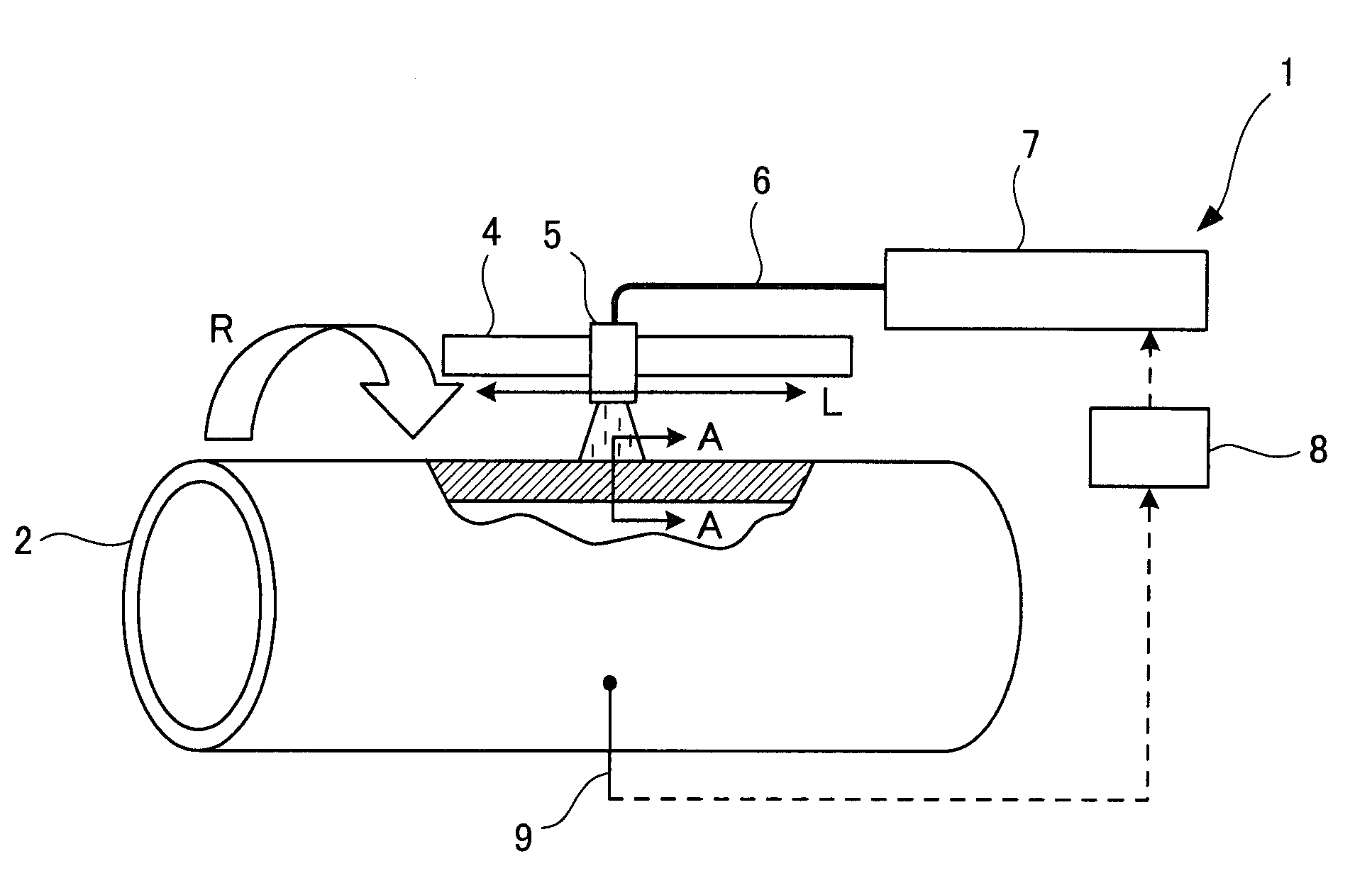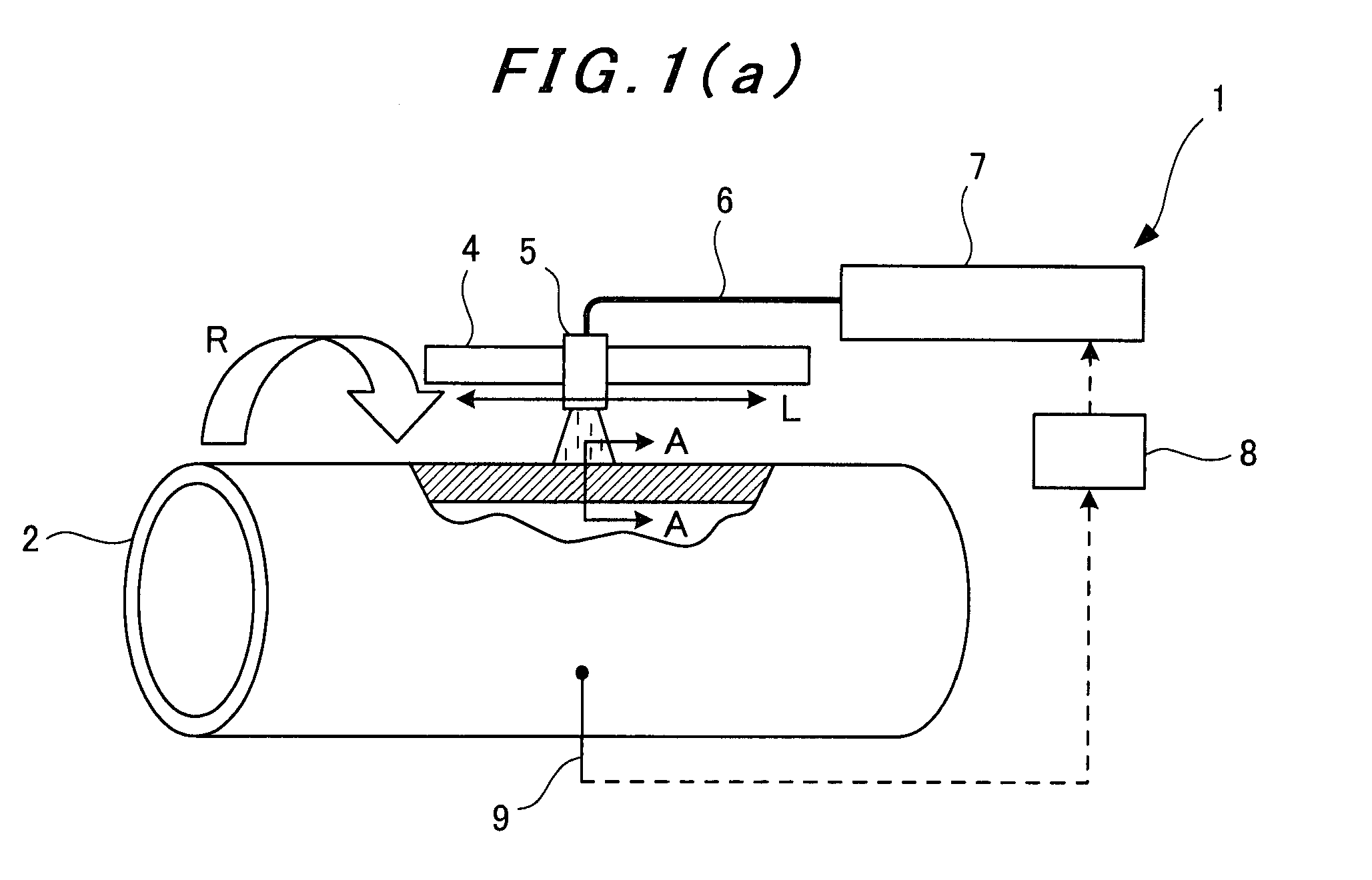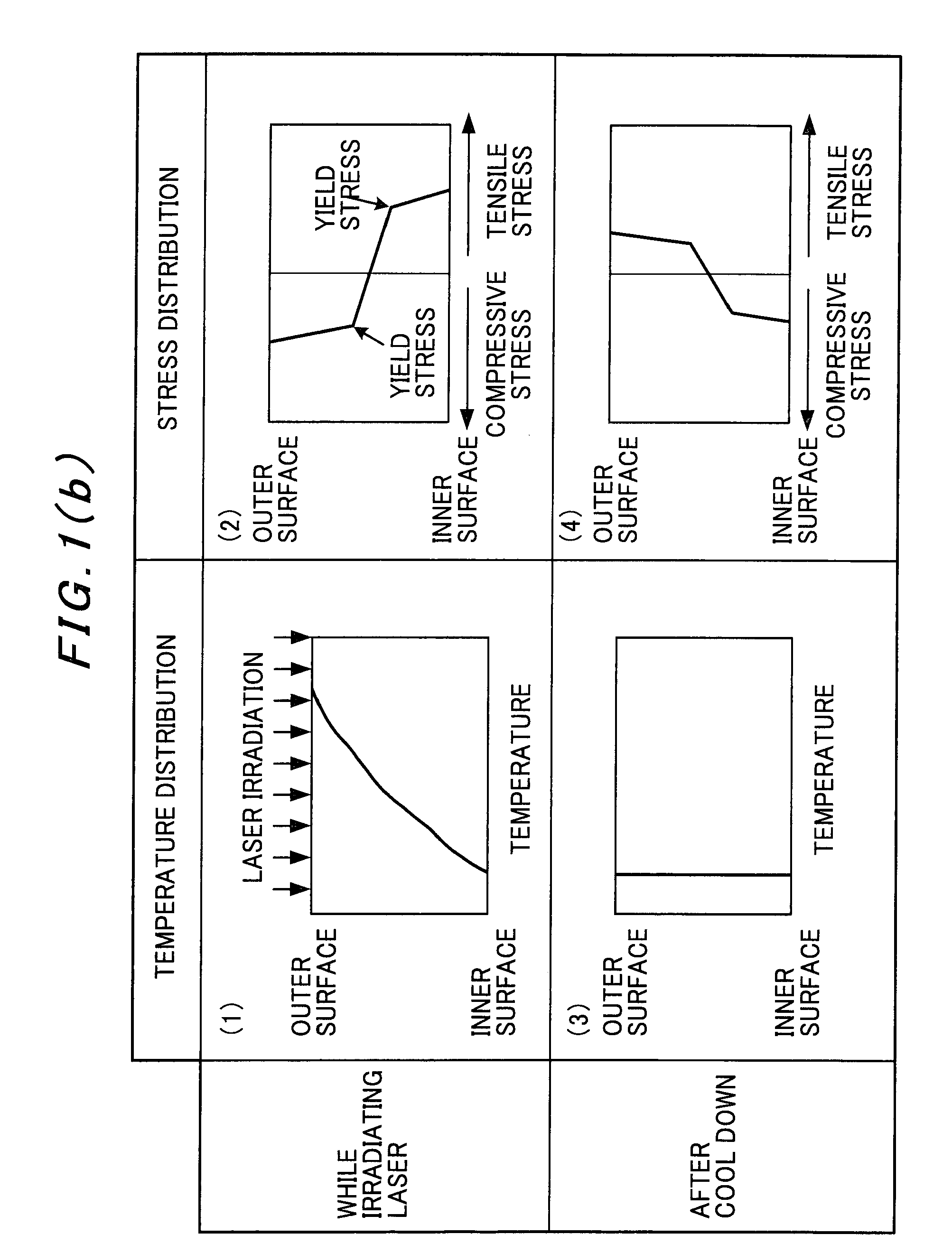Method and system for improving residual stress in tube body
- Summary
- Abstract
- Description
- Claims
- Application Information
AI Technical Summary
Benefits of technology
Problems solved by technology
Method used
Image
Examples
embodiment 1
[0051]FIG. 1 is a view explaining a tube-body residual stress improving system according to the present invention and the principle thereof.
[0052]As shown in FIG. 1(a), a residual stress improving system 1 includes a support section 4, an optical head 5, a laser oscillator 7, and a controller 8. The support section 4 is extended in an axial direction L of a pipe 2 as a cylindrical tube body and can be rotated around the outer circumference of the pipe 2 coaxially with the pipe 2 by a not-shown rotary moving device. The optical head 5 is supported by the support section 4 and irradiates a laser beam onto a predetermined area of the outer circumferential surface of a welded part of the pipe 2. The laser oscillator 7 is connected to the optical head 5 by an optical fiber 6 and supplies the laser beam to the optical head 5 through the optical fiber 6. The controller 8 controls the rotational moving device, the laser oscillator 7, and the like. In an area where the outer circumferential ...
embodiment 2
[0065]FIG. 3 is a view explaining another example of the embodiment of the tube body stress improving method according to the present invention.
[0066]This embodiment is described based on the residual stress improving system 1 shown in Embodiment 1. Description of the constitution of the residual stress improving system 1 itself is therefore omitted. Embodiments 3 to 5 shown below are described based on the residual stress improving system 1 shown in Embodiment 1, as well, and therefore description of the constitution of the residual stress improving system 1 itself is omitted.
[0067]As shown in FIG. 3, in this embodiment, when the start and end angles θs and θe of laser irradiation to a tube body are 0° and 360° as circumferential positions, respectively, in other words, when the start angle θs=the end angle θe, the intensity of the laser beam is gradually increased from an intensity ratio of 0 to an intensity ratio of 1.0 as the steady intensity during rotation from the start angle...
embodiment 3
[0070]FIG. 4 is a view explaining still another example of the embodiment of the tube body stress improving method according to the present invention.
[0071]As shown in FIG. 4, in this embodiment, when the start and end angles θs and θe of laser irradiation to a tube body are 0° and 360° as circumferential positions, respectively, in other words, when the start angle θs=the end angle θe, the intensity of the laser beam is set to an intensity ratio of 1.0 as the steady intensity and keeps an intensity ratio of 1.0 during rotation from the start angle θs to the second predetermined angle θ2, which is short of the end angle θe (an steady output step). Next, during rotation from the second predetermined angle θ2 to the end angle θe, the intensity of the laser beam is gradually decreased from an intensity ratio of 1.0 to 0 (an output decreasing step) and caused to reach 0 at the end angle θe=360° (an output stop step). A cycle of all the above steps is performed at one turn of rotation fo...
PUM
| Property | Measurement | Unit |
|---|---|---|
| Temperature | aaaaa | aaaaa |
| Ratio | aaaaa | aaaaa |
| Residual stress | aaaaa | aaaaa |
Abstract
Description
Claims
Application Information
 Login to View More
Login to View More - R&D
- Intellectual Property
- Life Sciences
- Materials
- Tech Scout
- Unparalleled Data Quality
- Higher Quality Content
- 60% Fewer Hallucinations
Browse by: Latest US Patents, China's latest patents, Technical Efficacy Thesaurus, Application Domain, Technology Topic, Popular Technical Reports.
© 2025 PatSnap. All rights reserved.Legal|Privacy policy|Modern Slavery Act Transparency Statement|Sitemap|About US| Contact US: help@patsnap.com



